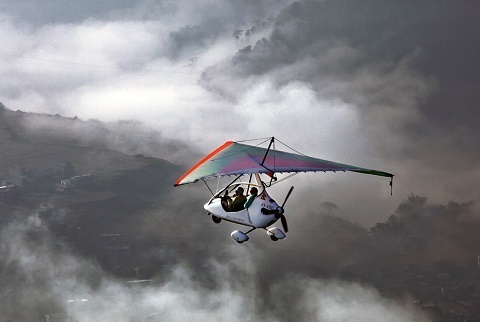From Sportfishing
Fish Report for 9-30-2016

Spearfishing for White Seabass
9-30-2016
Carrie Wilson
Question: It’s been an ongoing debate among our small spearfishing group and it’s time to ask the authorities. When spearfishing from a boat, if a diver reaches his maximum limit of three white seabass (WSB) for the day and then gifts one of his fish to somebody who does not have a fish, can the person who caught the fish hunt for one more WSB since he now only has two in his possession? (Chester L.)
Answer: No, each spear fisherman (or angler) is allowed to catch and keep up to three white seabass per day, period. If a fisherman chooses to give one away, that’s fine, but they cannot then continue to try to catch another to refill their personal bag limit for the day. That spear fisherman would have to wait until the next day, and if they still had their two WSB in possession, they would only be able to catch one more the next day because three WSB is both the daily bag limit and the possession limit.
There are a couple of exceptions here, though. Anglers/divers who will be out to sea for multiple days can get a multi-day fishing permit that will allow them to keep up to three limits of WSB over three days if they have secured this permit prior to their trip and followed all of the associated regulations under California Code of Regulations Title 14, section 27.15. There is also a one-fish limit between March 15 and June 15 for the take of white seabass south of Point Conception.
Finishing hunt after legal hunting hours?
Question: I hunt with a bow and on some occasions will shoot my game right at sundown and then have to chase my animal sometimes for an hour or more. And then when I find it, I may have to shoot it again. Is it legal to finish off an animal after dark if it was shot during the legal hunting hours? (Geoff M., Camarillo)
Answer: No. Authorized hunting and shooting hours are clearly stated in the regulations as running from one-half hour before sunrise to one-half hour after sunset (CCR Title 14, sections 310, 310.5 and 352). To shoot an animal outside of those authorized hours is illegal.
Whenever possible, try to plan your hunt so that you will not be pushing the envelope right at the end of hunt hours and can leave ample time to track and retrieve the animal during legal hours.
Shooting aggressive ravens?
Question: What are the restrictions on shooting ravens in California? I have personally witnessed ravens killing baby chukar and baby red-tailed hawks. At my home they raid my chickens and steal the eggs. They like to sit on a pole where the remnants of their kill ends up on the ground, including a variety of egg shell bits and baby desert tortoise shells. I have also seen a group of ravens attempting to kill a cat. I know that they became protected at one time, but what is the status now? Can I shoot the ones on and around my property? (David C.)
Answer: No. Ravens, Corvus corax, are protected by both California (Fish and Game Code, section 3513) and federal laws (Title 50-CFR). Ravens may not be taken in California except under the authority of a permit issued by the U.S. Fish and Wildlife Service (USFWS). For more information regarding the availability of permits, please check the USFWS Permits website.
Transporting overlimits?
Question: Can I transport an overlimit of fish carcasses to the dump? For example, three peoples’ fish limits are cleaned at a home location. Then, one person pulls the short straw and gets stuck having to take the combined carcasses by vehicle to the dump. I can see how if they were stopped by law enforcement and they had an overlimit of three peoples’ carcasses carried by one person, an explanation stating that person was dumping three legal limits of carcasses may or may not fly with a warden. Can you please provide some clarity? (Trevor L.)
Answer: The department recommends that the person transporting the carcasses have copies of each person’s fishing licenses, or at least their names and contact information in case the transport and disposal of more than one person’s limit comes into question.
Carrie Wilson is a marine environmental scientist with the California Department of Fish and Wildlife. While she cannot personally answer everyone’s questions, she will select a few to answer each week in this column. Please contact her at CalOutdoors@wildlife.ca.gov.
< Previous Report Next Report >
More Reports
CDFW Recognizes Original Conservationists
San Joaquin River
9-24-2016
National Hunting and Fishing Day is Saturday, Sept. 24. The California Department of Fish and Wildlife (CDFW) reminds Californians of...... Read More

9-24-2016
Question: We live around the Imperial Wildlife Area (Wister Unit) and over the past two years we’ve seen an influx...... Read More

Website Hosting and Design provided by TECK.net